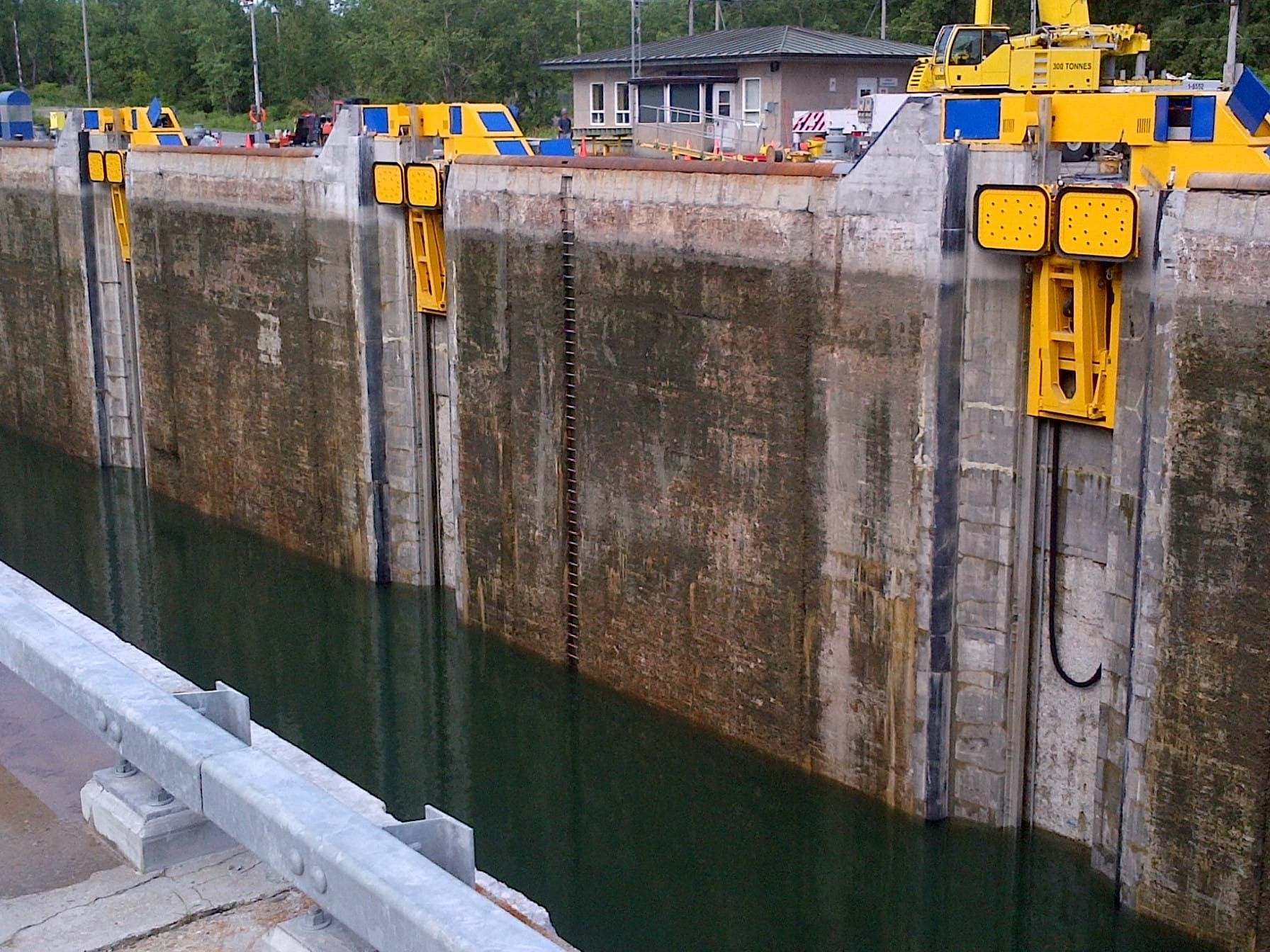
Canadian Seaway authority implements hands-free mooring
The St. Lawrence Seaway Management Corporation (SLSMC) is the first entity worldwide to use hands-free mooring to secure a ship during its passage through a lock.
The Green Marine participant is in the process of deploying three double-pad mooring units within every high-lift lock along the Canadian span of the St. Lawrence Seaway.
HFM originated in New Zealand to quickly secure a vessel, such as a ferry, to a wharf. SLSMC began developing and testing the HFM technology in 2007 for use within the Seaway’s locks. Once a ship enters and stops within a lock chamber, each HFM unit extends from the lock wall to vertically position and attach its double-pads to a smooth area on a hull’s surface. Once attached, vacuum suction is used to create a grip that enables the HFM units to keep a vessel secure. The HFM units adjust to the rising or falling water level within the lock by gliding up or down on track rails that are recessed within the lock’s concrete wall. After the vessel has been raised or lowered, the vacuum suction is released, the pads retract, and the vessel is soon on its way.
The units eliminate the need for manually attaching wires or ropes to secure a vessel, which is a more labour- and time-intensive process that can pose safety risks if a wire or rope snaps or tangles. HFM units are now operational within the locks at St. Lambert, Beauharnois 1 and 2 and Welland Canal 3. Slots have been cut and rails installed at Welland Canal Locks 1, 2 and 7, and at the Cote Ste. Catherine Lock in Montreal. These locks should be rendered operational during 2015 navigation season. The remaining high-lift locks will be fitted with HFM equipment over the course of the 2016 and 2017 navigation seasons with all high-lift locks becoming HFM-operational by the end of 2017.
Less costly to operate, the HFM technology will help SLSMC to achieve its government mandate of becoming financially self-sufficient. By taking less time to pass through a lock, ships will save fuel and reduce their air emissions.